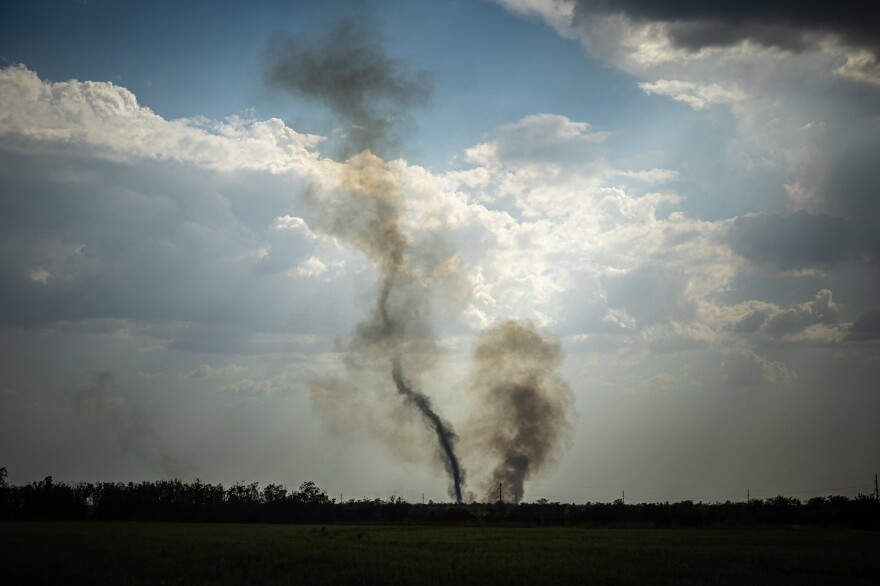MYKOLAIV REGION, Ukraine — Rockets roar out of a farm field here near the front lines of the war against Russia. They leave long, white contrails against Ukraine's famously big, blue sky as they head toward Russian military targets. These are U.S.-provided High Mobility Artillery Rocket Systems, known as HIMARS.
"Thanks for this present," says a Ukrainian reconnaissance soldier nicknamed Fox, who is watching in his green body armor with a knife and a walkie-talkie strapped to its front. Fox did not wish to give his name to protect family members living in Russian-occupied territory.
Fox directs fire for artillery and long-range weapons such as HIMARS onto Russian targets. Like most soldiers here along the southern front, Fox raves about the HIMARS.
"Yesterday, we had one job and it hit exactly on point from long distance," says Fox, who is describing a strike of about 24 miles.
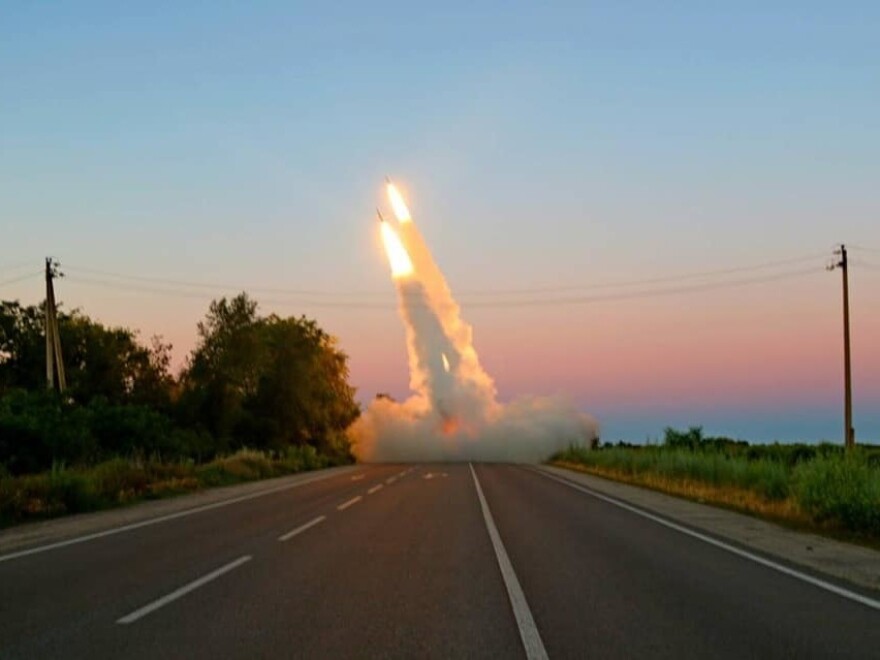
In fact, the HIMARS deployed here can hit at more than twice that distance. When NPR visited the southern front four months ago, the Ukrainians had nowhere near that range.
Ukraine launched a counteroffensive this week in the south to take back territory from the Russians and break a stalemate in the region. More sophisticated Western weapons such as HIMARS are crucial to that fight.
Ukraine reaches deeper behind enemy lines
Col. Roman Kostenko says HIMARS have already helped a lot. Kostenko, a Ukrainian lawmaker who has been working as a commander in the south since the Russian invasion, says the HIMARS' range and precision allow the Ukrainians to strike deep behind enemy lines.
"After these systems hit the Russians' arms depots and bridges that connect to the city of Kherson, the enemy was forced to reduce the density of their fire on our positions," says Kostenko.

He's referring to key bridges the Russians use to supply their soldiers in Kherson, a strategic port city that fell to the Russians in March.
The problem, Kostenko says, is the Ukrainian armed forces simply don't possess enough of these weapons to help them really turn the tide.
Kostenko first met with NPR here in April. Asked how much territory the Ukrainian military has taken back since then, he says: "Not a lot."
Progress has been slow, sometimes an average of a mile or so a month. A soldier who operates an anti-tank missile tells NPR it took three months to take one village, because the Russians were so well dug into their defensive positions.
The U.S. has sent more weapons more quickly to Ukraine — committing over $13.5 billion in security aid to the country since January 2021 — than it has to any other country in decades, according to U.S. government historians. Kostenko says he's grateful for that. But he also says the army here needs much more to make a big push in the south.

"Russia is very resourceful," he says. "What we have now is probably 30% of what we really need in order to carry out successful offensive actions to liberate our territories."
Soldiers use flippers to cross a mined river
Kostenko says the troops here have had successes. He says soldiers recently took back a nearby village from the Russians. Kostenko cites the ingenuity of a special forces team and the element of surprise.
"They left at 3 in the morning and arrived at a river," Kostenko recalls. "The enemy mined the river bottom and, to avoid stepping on the mines, our soldiers used flippers."
Kostenko also says Western long-range weapons helped batter the Russians holding the village. He pulls up a video on his cellphone of a public school building where the Russians were holed up. There is a giant crater in front of it. Kostenko says that strike killed at least 20 Russian soldiers. He won't name the weapon, and only says it came from what he calls "our Western partners."
The Ukrainians still rely on older weapons with less range to do a lot of their shelling. One morning, a Ukrainian soldier led an NPR reporter through a field of dandelions. We passed part of a Russian cluster bomb jammed halfway into the side of a hill. Around the corner sat a rusting howitzer, partly caked in mud.
A small team was cleaning the cannon's firing mechanism with water and lubricant spray. Nearby stood a truck filled with pointy shells of different sizes that looked like giant bullets. The team lives in a big hut they've built out of wooden ammunition crates. A member of the crew named Artem, who wears a black Reebok T-shirt, says the Ukrainians captured the howitzer from the Russians earlier in the war. He doesn't want to use his full name for security reasons.
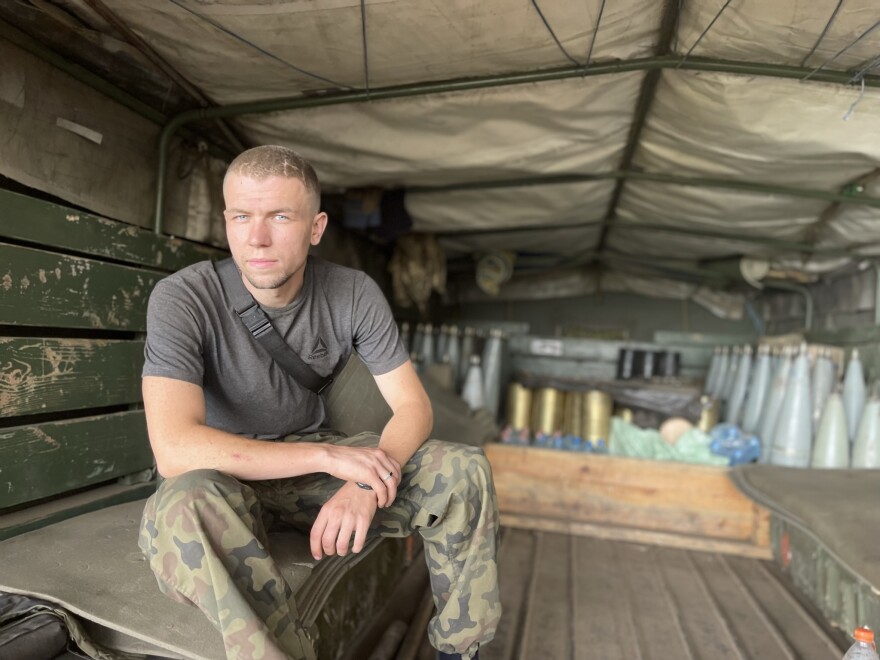
It dates to 1989 and has a range of just over 12 miles. The howitzer is entirely manual. Artem shows how to aim it by spinning wheels that move the barrel up and down and from side to side.
"This is a good weapon," says Artem, who is 24. "But it is an old weapon. I would like something newer. But we have what we have."
In fact, the weapon is so old, the team is running out of ammunition for it. Artem says in a few weeks they will have to retire the Cold War relic.
Turning ordinary civilians into a fighting force isn't easy
Weapons are just one challenge the Ukrainian army faces. Another is continuing to train civilians to form a capable fighting force.
Maj. Roman Kovalyov oversees a battalion in the Kherson region. Ninety percent of his troops had no previous military experience.
"They have passionate hearts, they are ready to go into battle," says Kovalyov. "However, they don't realize how little they know."
![Major Roman Kovalyov in the Kherson region on Aug. 22. He says he is worried that some Western countries do not want Russia to lose the war. "I have a clear feeling lately that we are being kept on artificial respiration," says Kovalyov. "We are given just enough [weapons] so that we do not lose, and don't win."](https://npr.brightspotcdn.com/dims4/default/2cd2577/2147483647/strip/true/crop/2048x1535+0+0/resize/880x660!/quality/90/?url=https%3A%2F%2Fmedia.npr.org%2Fassets%2Fimg%2F2022%2F09%2F02%2Fimg_7002_custom-7abeb83753f866919bfae771f6ffe201d39bc3a3.jpeg)
The major says the biggest challenge in the first couple of months of the war was instilling discipline. For instance, he sent one group of soldiers out to provide cover for another one.
"They forgot water, night vision goggles, backpacks," Kovalyov recalls. "They were half an hour late. And, because of that, the second unit came under heavy fire. Thank God no one was hurt."
Afterward, the team that got shelled punched out the latecomers. Kovalyov says his soldiers have improved significantly since then, but he also says an improved army can only do so much against a better armed one such as the Russians.
"I have a clear feeling lately that we are being kept on artificial respiration," says Kovalyov. "We are given just enough so that we do not lose, and don't win.
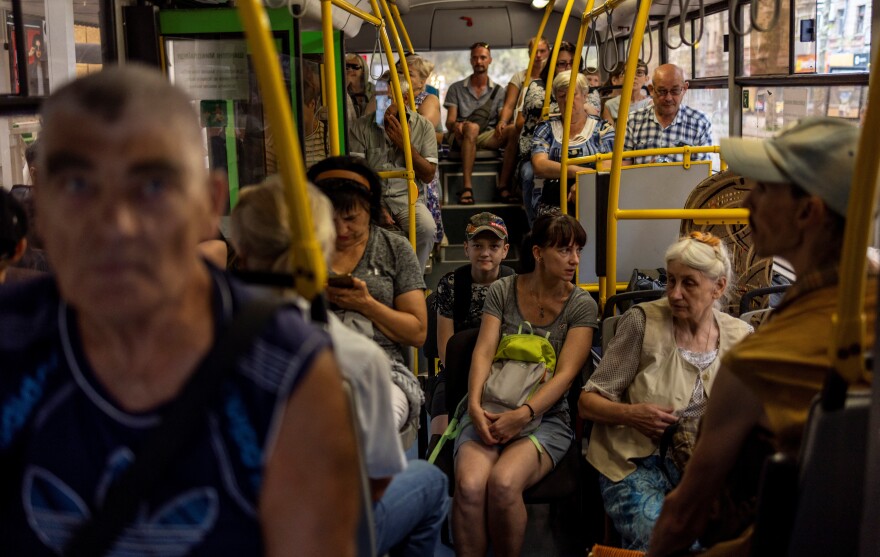
Ukraine's military calls on the West for more help
Standing in a village in the Kherson region, which Russia mostly occupies, he addresses political leaders thousands of miles away in Washington, London, Paris and Berlin:
"Give us enough weapons, please. And we give you our word, we will knock the enemy out of our land."
But Kovalyov worries the West does not share Ukraine's goal of total victory, of taking back the 20% or so of the country Russia has seized since its illegal annexation of Crimea in 2014.
He says the U.S. and NATO allies have various other geopolitical interests such as China, and in the case of Washington, the future of Taiwan.
"Politics is a complicated thing," Kovalyov says. "I think they don't want Russia to lose."
But Major Kovalyov also says he thinks the future world order is being decided here and now in his homeland.
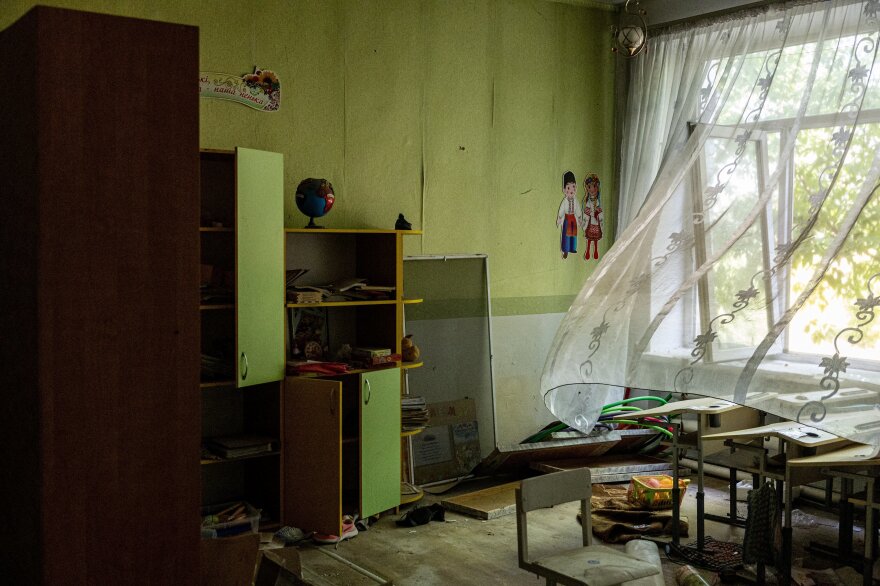
Producer Kateryna Malofieieva contributed to this story.
Copyright 2022 NPR. To see more, visit https://www.npr.org.
Loading...



